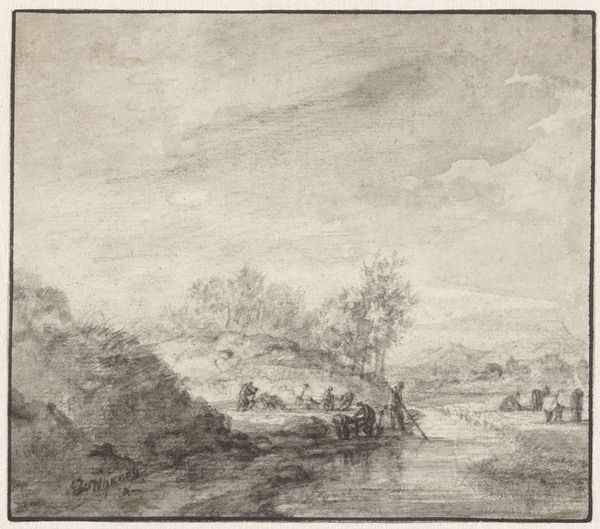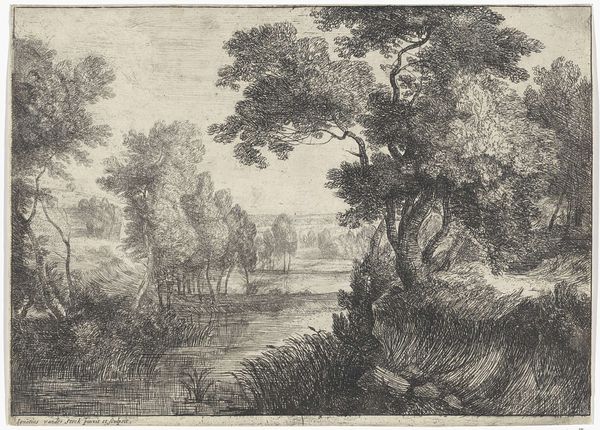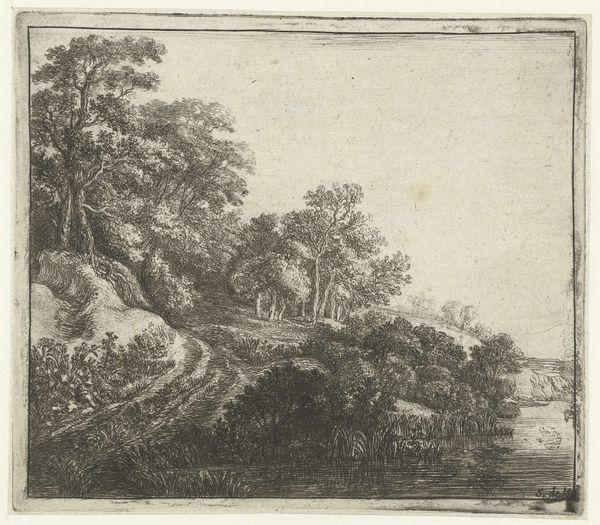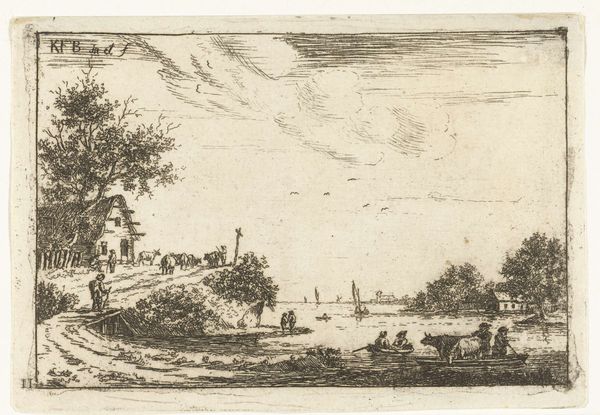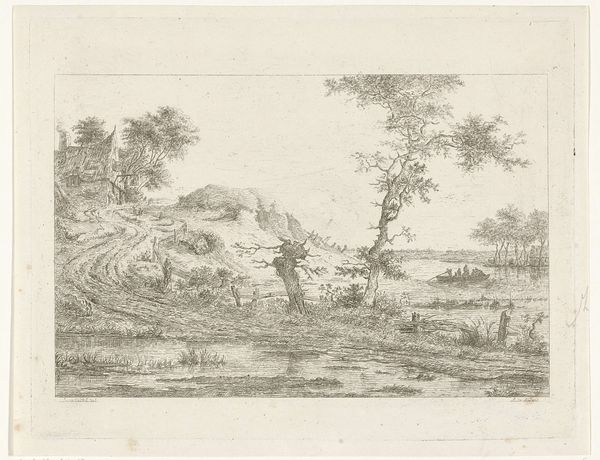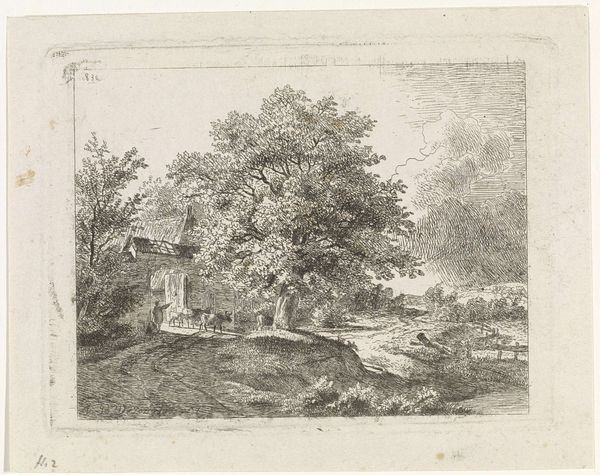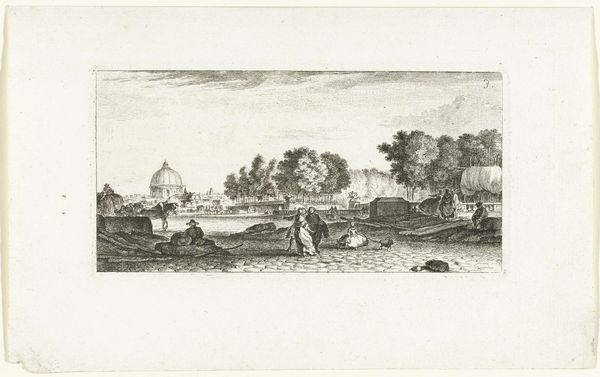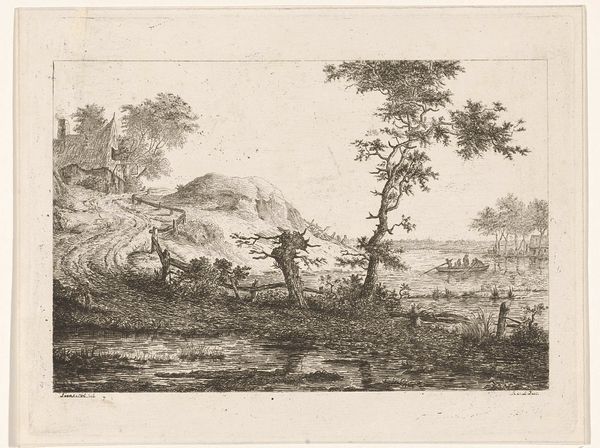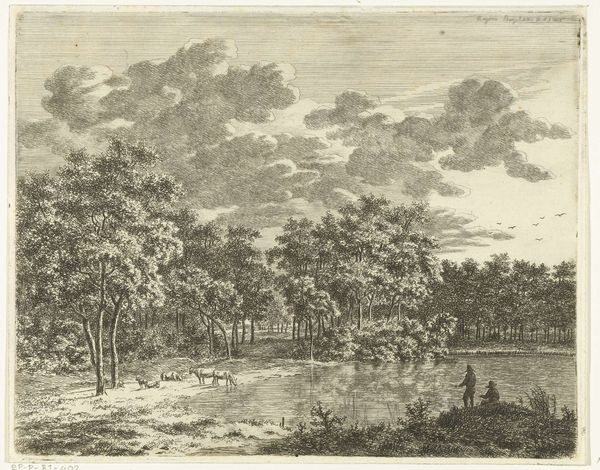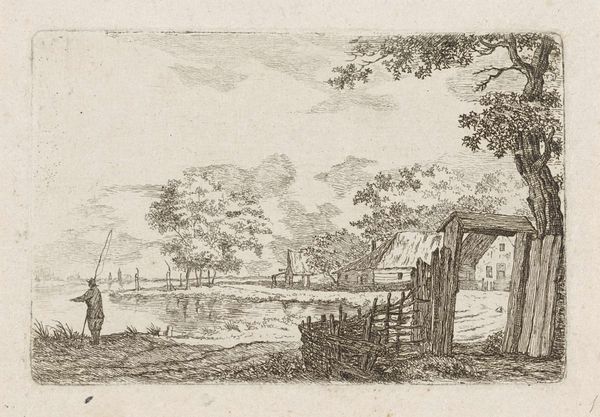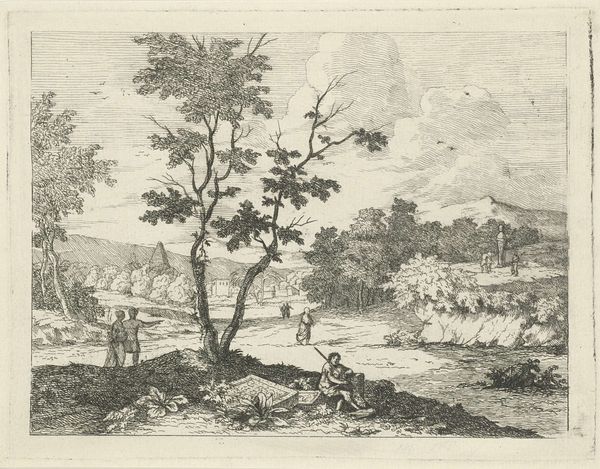
print, etching
# print
#
etching
#
landscape
#
etching
#
romanticism
Dimensions: height 102 mm, width 151 mm
Copyright: Rijks Museum: Open Domain
Editor: This is "Rivierlandschap," or "River Landscape," an etching from somewhere between 1796 and 1856 by Reinierus Albertus Ludovicus baron van Isendoorn à Blois. It's very delicate, with fine lines creating this idyllic scene. What strikes you most about this work? Curator: The labor involved in creating this print, the precise control over the etching process, speaks volumes. Think about the materiality: the metal plate, the acid, the paper – all interacting. This wasn't a quick sketch; it demanded skill and time. Editor: Right, the technical expertise is clear. So, beyond the picturesque scene, what else is communicated? Curator: I am compelled to question the societal position of this artist and how that influenced not just the production process but his access to the tools necessary to make this print. Look at the paper – probably quite costly at the time. Who was his audience, and how did this medium democratize, or perhaps further solidify, class distinctions within art consumption? Editor: I hadn't thought about it in terms of class… That opens up the reading. I guess I assumed prints made art more accessible? Curator: Initially, yes, perhaps to a limited degree. But who truly had access? Who could afford prints? It's a romantic landscape, idealized. Consider how the materials contribute to constructing that ideal. The very act of transforming a landscape into a repeatable image involves a degree of control over not just nature but its consumption. Editor: That's fascinating. The medium itself shaping how we see the world. Curator: Exactly. The process, the materials, the social context. It’s all inextricably linked. This isn't just about aesthetic beauty. It’s about the means of production and how they influence meaning.
Comments
No comments
Be the first to comment and join the conversation on the ultimate creative platform.
